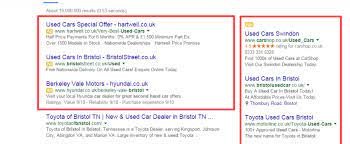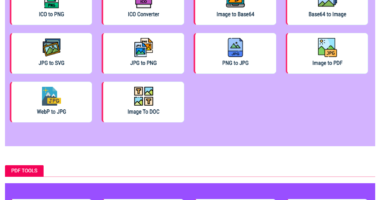Ever wonder what the correct answer to the question ‘where am I placing my ads to show on certain sites across the Internet, you can add these websites as:

The correct answer to the question ‘If you’d like your ads to show on certain sites across the Internet, you can add these websites what you should add them as is Placements
What are placements that place my ads?
Placements are locations where your ads can appear on YouTube or the Google Display Network. A placement can be a website or a specific page on a site, a mobile app, video content or even an individual ad unit. With placement targeting, you can add placements to ad groups in your Video and Display campaigns.
What is GDN meaning when placing my ads?
GDN Meaning is Google Display Network. The Google Display Network is a collection of websites – including specific Google websites like Google Finance, Gmail, Blogger and YouTube, that can show ads. The GDN specific purpose is to share information and the meaning of these sites includes by way of mobile sites and apps.
What two main ad formats can be used in a google display ads campaign?
Uploaded Ads and Responsive Display Ad are the key ad formats to use in Google Display Ads campaigns when placing my ads.
Google Display Network allows users to create different formats of digital ads and customize them. There are two main ways to create display ads: uploaded and responsive and when you advertise on the Google Display Network your ads can appear across a large collection of website mobile apps and video content?
With display campaigns, when placing your ads can appear on the Google Display Network, which is a large collection of websites, mobile apps, and video content. You can add targeting signals to your campaign to find audience segments that help your campaign meet its goals.
What is a benefit of online advertising with google adwords
Online advertising allows you to show your ads to the people who are likely to be interested in your products and services, while filtering out folks who aren’t. And you can track whether those people clicked your ads
How to Use Paid Search

It is important to understand that paid search is not a replacement for any strategy in your marketing mix, it should be to complement other inbound marketing strategies.
Great options you can use paid search for
Paid search can be used for testing and optimizing your landing pages.
You can take one ad and set it to go to two different destination URLs to test two different landing pages. So, you can direct one ad to a page with one offer (a guide on finding keywords techniques for beginners), and the other to a page for another offer (an actual product page for a keyword research program).
This is called A/B testing, a very import ant and highly recommended practice for optimizing your ads strategy.
Paid search is a great way to do landing page A/B testing because it allows you to direct traffic to your choice of pages, split this traffic to different pages, and ultimately find the pages that convert at the highest rate.
Google Ads remarketing is a form of online advertising that enables sites to show targeted ads to users who have already visited their site. They are set up with audiences that have visited, clicked or shown interest in your site prior to running the ad, giving you a second opportunity of showing your potential customer more features of your product and why they should buy. Moving them further up the buyers pyramid.
Three elements of paid search
When placing your ads, Keywords, ads, and landing pages are the three main elements of a paid search campaign.
Outlining the keywords, you wish to target, Google will display your ad in the results page when people search for those keywords.
It is important to define your ad’s purpose and design your ads specifically around these keywords, ensuring relevancy to the search query and eye catching enough to achieve the click!
Once viewers click on your ads, your ads will then direct them to your landing pages.
The goal of your landing pages is to get the visitor to convert in some way – by buying your product, downloading an offer, completing an email submit for a free product offer, etc. So the importance of creating the ad to manage, match, and optimise these three important points
Finding new keywords

Paid search can be used to find new keywords for your marketing campaigns.
Google Ads can generates a Search Terms report which will display the keywords for which your ad has been set for.
When bidding on the keyword “green apples”, Google may serve your ad when someone searches “how juice are green apples” because that’s what the user searched.
The report also contains information about each keyword’s performance, so you can create further opportunities throughout your campaign.
Search terms showing the green ‘Added’ box next to them are the those that have been used in this paid search account and those suggested terms will quote (close variant). This list is very valuable to your campaign as they are keywords that your potential customers are typing into google.
By increasing your presence on Google Search engines, you can establish your company as a leader in your industry. This can be done both organically through good keyword research and through Paid search ads. This double whammy will give you great presence on the page for a single highly searched keyword.
Keyword Match Types

Displaying your ad, you not just looking to pick a specific group of keywords and only have the ad shown when those keywords have been specifically entered into the search engine.
As you would be aware there infinite number of ways people can actually search for one term, so Google has created three keyword match types that you can use to give them more specific instructions for when to display your ads. These are: exact match, phrase match, and broad match.
Phrase match will extend the search to include the exact match + extended wording for example “affiliate marketing for beginners” giving you further opportunities of finding your searching customer base.
Broad match will not be presented in either quotes or brackets so will then indeed return results for any search containing the words affiliate marketing so will pick up any search with pre fill or post fill words on the search.
Negative keywords can also help advertisers refine the targeting of their ads, and potentially increase there searches be reducing any result that has these words included so if you were not looking for beginner you would include the negative work with a minus symbol -beginner so that they were excluded from the search results.
Commonly used strategies can start with all keywords set to broad match, totally opening up the floodgates to all related traffic.
Now, high volume of traffic can be positive, but qualified traffic they may not be!
In other words, say, for example, someone searches for “beginner” and your ad for “affiliate marketing beginner” appears. The viewer is unlikely to have been searching for your particular niche.
They may have been looking for “beginner swimming lessons” so clicking on your ad would not give you a positive path to the sale. Being too general and vague will indeed give you good search results but not leads for the potential buyers you are looking for.
It’s extremely important, if you set your keywords to broad match, to ensure that you are closely monitoring the results for the search queries being reported.
Don’t forget, you can use negative match to add negative keywords when necessary.
A solid successful keyword strategy to use would be broad match and phrase match to drive traffic, then use the Search Terms report to find the keywords that are converting and work for your strategy, and then set those to exact match, as they have proven to work for your purpose.
Testing and re-testing will help you to figure out your match type strategy. using your performance metrics to optimize your keywords, which could include adding and deleting keywords or changing their match types.
It will be an ongoing process. Keyword performance will change over time, and you should ensure your campaign strategy changes with it.






1 comment